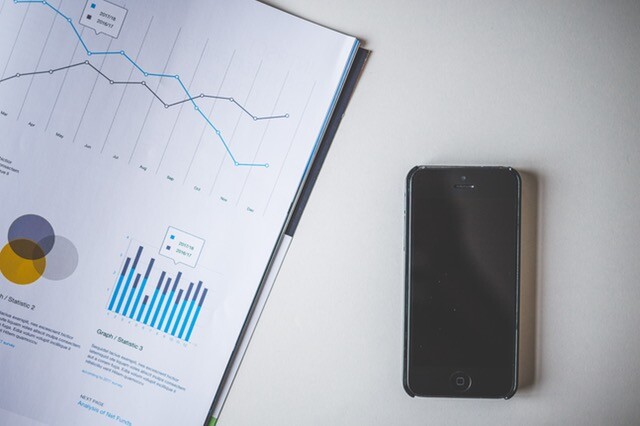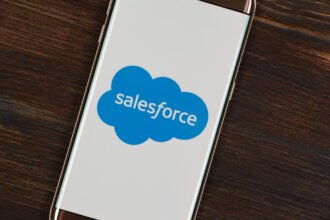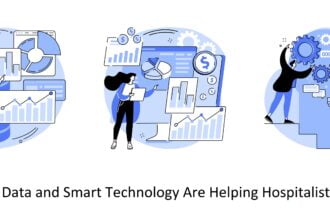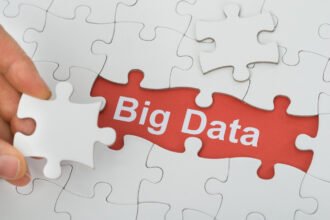For today’s businesses, big data offers numerous possibilities. Big data analysis also offers a number of advantages when it comes to the prospective as well as current customers of an organization in addition to gains in efficiency and revenue.
For the marketing department especially, this is a very big news. In-depth understanding about the potential buyers, their preferences and habits can help make sure that offerings and advertising are targeted for a particular group, enhancing the chances of loyalty and conversion. In addition to this, it can finally put an end to the age-old problem of offering huge amount of money to a advertising campaign and expecting miracles from them. Today, every dollar that is being spent on marketing is a highly calculated investment and ensures big returns.
When it comes to prospective clients, does your business know whom to target and when they are identified, how do you capture them? Let us take a look:
Involve Looking Internally
While it will be tempting to make the most of big data in a way that is facing outwards to exploit the new customers but experts like John Weathington who is a TechRepublic contributor states that this kind of big data strategy is highly successful when analysts first analyze the existing customers.
Weathington explains this kind of initiative as the noise and the signal where analysis is used to determine the existing loyal customers of a company. All the data is considered as noise and all these individuals are the signal. In this manner, the business can determine the type of clients who make up its current true customer base and can then search harder and find other individuals who can get connected to this group in the larger marketplace.
From the order history, customer service information, order management system of the business, the analysts can create a all-round view of your most loyal shoppers by leveraging data. These individuals are designated by being the highly satisfied ones with their experience with your organization and this also comes at the lowest possible cost to your organization.
Weathington has stated that “you will possess a good number of attributes that have a powerful signal against the value of the customer with minimum noise. You will presumably determine various markets that are not productive for your business i.e., they spend very small amount and take a lot of time with your customer service representatives. With this knowledge, you will come to know where to focus your valuable relationship offerings and marketing dollars.”
Collecting the Maximum amount of Data
Mike Dickey, a WIRED contributor has noted that when it comes to understanding your customers, it would be most helpful if you gather as much information as possible. It is also important to make the maximum use of your clients’ personal details, including their location, age and other valid information in addition to other brand interactions, returns and exchanges and prior buying history. This is helpful in getting the entire picture of your client base and eliminate any knowledge gaps.
Dickey pointed out that “the blind spots can lead to missing valuable information and misleading the complete picture of the experience of the customer. Ensure you capture everything that can have an effect on the behavior and experience of the customer.”
It is important to not presume anything about your client base before the analysis gets completed. This process can disclose insights and patterns that might not have been readily available or come to light previously. This knowledge is helpful for you in addressing the specific preferences and needs of your customers. “Willingly, accept your customers for what they do instead of what you ponder they are doing. Allow the data to deliver insight and you stay objective,” Dickey suggested.
It is also crucial to keep in mind that this analysis is an ongoing process. The preferences and needs of the customers will be changing constantly and are influenced by the entire host of variables including the emerging products, current trends and various other important factors. However, it is not easy to remain more advanced when it comes to requirements, this process makes sure you remain top-of-mind for both your future as well as current clients.
Use it to Your Advantage Once You Understand Everything
When your brand is capable of identifying its loyal customers and who have the finest experience with the organization, you should use this data to the benefit of the business. Dickey pointed out that “as your business functions in real-time, your analytics should also function in the same way. The capability to attain insights into the behavior and experience of your customers enables you to determine what is happening as it is happening and take correct action steps as required to ensure greater business results and optimal user experience.”
Some ideal ways to put this data to work for you are mentioned below:
Address the problems or emerging needs instantly
It is crucial to provide services or products that align with the current preferences of your best customers. Take for example, if data analysis reveals that most of your ideal clients are suggesting certain adjustments or changes to a product that might lead to a much better experience, those needs have to be heard and addressed first.
Determine the patterns and target those individuals
It is also critical to detect and use any patterns that emerge from the big data analysis. For example, data shows that your ideal customers reside in a particular area of the country, or shop at a particular time of night or day, it can be useful to provide coupons or discounts to these individuals to strengthen their loyalty. These can also help in targeting other members of the group who may not be a part of your current client base.
Remind the Customers why they should Connect with your Brand
Big Data is also helpful in pinpointing the clients who may have shopped regularly with your company in the past, but haven’t made a purchase in a short time. This provides a special opportunity to your business to communicate efficiently to these individuals of why they connected with your organization in the first place and why they should continue to spend with the brand. Sending out a targeted mailer or email that leverages the purchasing history and preferences of the client can be an ideal strategy that can be used here. For example, if a person buys a product from your brand every few months, he/she will wait for the next right discount or offer to make the next purchase.
Partnering with Big Data Companies
When it comes to making the maximum use of big data to know about your customers and target your ideal clients, this is only the beginning. Your brand can not only determine its best shoppers but also can target other members of the group to expand its loyal shopper base.
Nevertheless, one of the big challenges faced by businesses today is the lack of resources to aid their big data initiatives. In addition to ideal infrastructure to save and work with this data, the organizations must have the skills to examine this data and make the maximum use of the insights to their advantage.
This is where a partnership with a big data company becomes a crucial part of the equation. The big data experts of that big data company can not only make sure that your organization has access to all of the ideal big data, they can help you in analyzing it for the highly powerful performance indicators, predictions and insights that will provide a high value for your brand.
Featured image by Pexels










